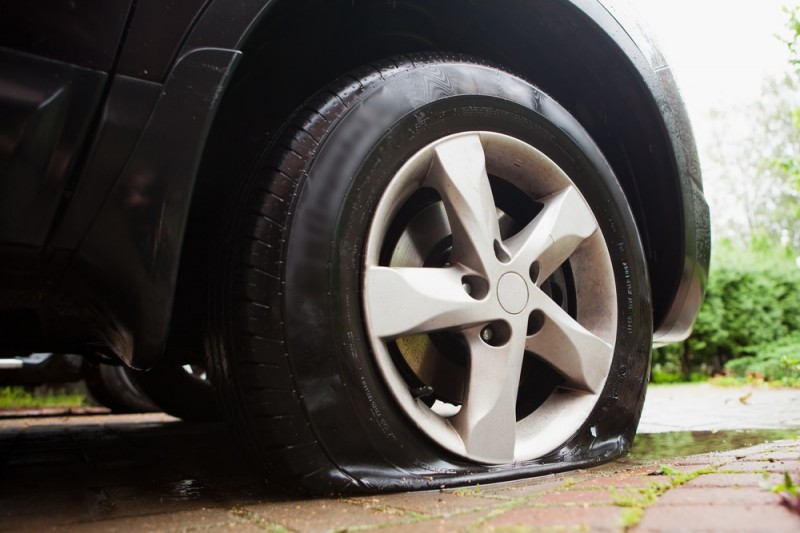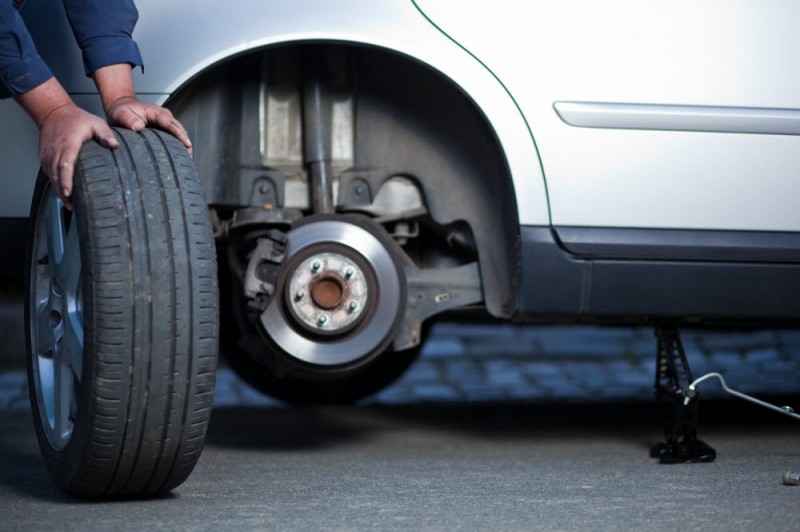Self-Healing Tires? That's Right!

It's a scenario that many drivers have encountered and had nightmares about. You're driving along and all of a sudden a tire goes flat. It's an unpleasant situation and something we all fear, and that's why you might be pleased to know that researchers at Harvard University have created a possible solution that could put those pesky flat tires in your rearview mirror.
At Sunny Auto Body - Potrero, we want you to be safe always when out on the roads and highways here in San Francisco and throughout the State of CA. So, we are excited to share this discovery from the Harvard John A. Paulson School of Engineering and Applied Sciences (SEAS). They have developed an innovative new type of rubber that is tougher than natural rubber and has the uncanny ability to self-heal.
Self-healing materials aren’t really new and in fact, researchers at SEAS have developed a wide range self-healing hydrogels, which rely solely on water to incorporate reversible bonds that can enable the healing process. But, engineering self-healing capabilities in dry materials that include rubber has proven to be much more challenging. Why? Because rubber is made of polymers that are primarily connected by undeviating, covalent bonds. While these bonds are extremely strong, they will never reconnect once they are broken.
 So, to create a rubber that is self-healable, the team at Harvard had to make the bonds connecting the polymers reversible, so that the bonds could break and reform. They developed a molecular rope to tie two types of bonds together-- and that's the genius part of their creation. This rope, called "randomly branched polymers", enables two previously unmixable bonds to be mixed homogeneously on a very small molecular scale. By leveraging this technology, they were able to make a totally transparent, extremely tough and 100% self-healing rubber.
So, to create a rubber that is self-healable, the team at Harvard had to make the bonds connecting the polymers reversible, so that the bonds could break and reform. They developed a molecular rope to tie two types of bonds together-- and that's the genius part of their creation. This rope, called "randomly branched polymers", enables two previously unmixable bonds to be mixed homogeneously on a very small molecular scale. By leveraging this technology, they were able to make a totally transparent, extremely tough and 100% self-healing rubber.
Typical rubber will crack at certain stress points when force is applied to the material. When it's stretched, hybrid rubber develops so-called "crazes" within the material--a feature that is very similar to cracks but instead connected by a series of fibrous strands. These "crazes" will redistribute the stress, so that there is no localized point of stress that can cause a disastrous failure. When the stress is completely released, the material will snap back into its original form and the "crazes" will suddenly heal.
Harvard’s Office of Technology Development recently filed a patent application for the technology and is aggressively seeking commercialization opportunities for this cutting-edge invention. So, hopefully all of us will be able to buy self-healing tires sometime very soon.
Sources: Harvard’s Office of Technology Development, CNN and AOL







 So, to create a rubber that is self-healable, the team at Harvard had to make the bonds connecting the polymers reversible, so that the bonds could break and reform. They developed a molecular rope to tie two types of bonds together-- and that's the genius part of their creation. This rope, called "randomly branched polymers", enables two previously unmixable bonds to be mixed homogeneously on a very small molecular scale. By leveraging this technology, they were able to make a totally transparent, extremely tough and 100% self-healing rubber.
So, to create a rubber that is self-healable, the team at Harvard had to make the bonds connecting the polymers reversible, so that the bonds could break and reform. They developed a molecular rope to tie two types of bonds together-- and that's the genius part of their creation. This rope, called "randomly branched polymers", enables two previously unmixable bonds to be mixed homogeneously on a very small molecular scale. By leveraging this technology, they were able to make a totally transparent, extremely tough and 100% self-healing rubber.
Social